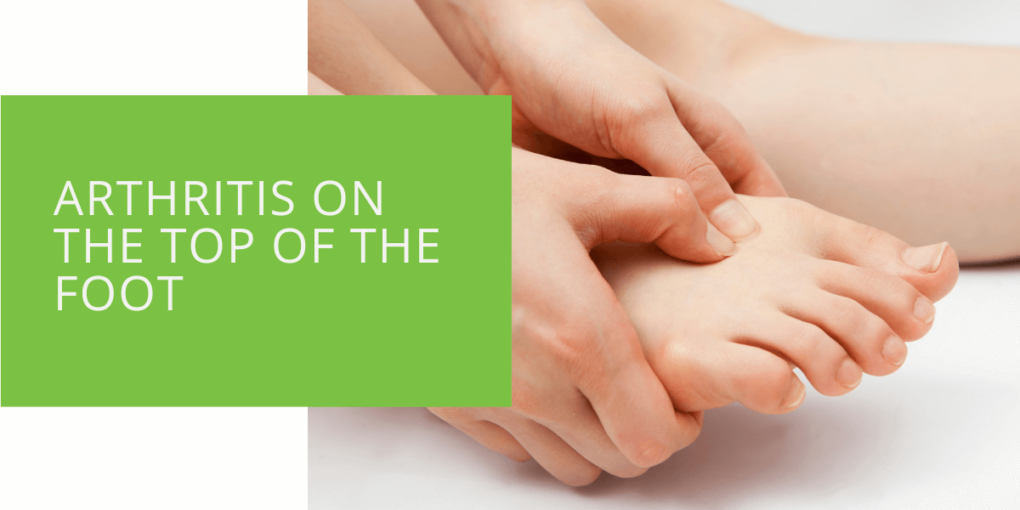Understanding and Managing Arthritis on the Top of the Foot
Arthritis is a common condition that can affect the joints in the body, including those in the foot and ankle. Arthritis on the top of the foot, also known as ankle arthritis, can be particularly debilitating and make it difficult to walk and stand. It is important for podiatrists and those dealing with arthritis on the top of the foot to understand the causes, symptoms, and treatment options for this condition. This guide will provide an overview of the key information needed to effectively manage and treat arthritis on the top of the foot.
Causes of Arthritis on the Top of the Foot
Several types of arthritis can affect the foot and ankle joints, including osteoarthritis and rheumatoid arthritis. Osteoarthritis is the most common type of arthritis and occurs when the cartilage that cushions the bones in the joint wears away. Rheumatoid arthritis is an autoimmune disorder that causes inflammation in the joints and can damage the cartilage and bone. Other causes of arthritis on the top of the foot include injury, trauma, and certain genetic conditions.

Symptoms of Arthritis on the Top of the Foot
Arthritis on the top of the foot can cause various symptoms, including pain and stiffness in the affected joints, swelling, and difficulty walking or standing. In some cases, arthritis can also cause bone spurs, or bony growths, to develop on the foot or ankle. These spurs can further complicate movement and cause additional pain.
Diagnosis and Treatment
If you suspect that you have arthritis on the top of the foot, it is important to see a podiatrist for a proper diagnosis. Your doctor may use diagnostic tests such as x-rays or MRI scans to confirm the presence of arthritis and determine the condition's severity.
Once a diagnosis has been made, various treatment options are available for arthritis on the top of the foot. Conservative treatment options include physical therapy, medications like nonsteroidal anti-inflammatory drugs (NSAIDs) like Naproxen, and orthotic inserts that can cushion the affected joints and reduce pain and swelling. Sometimes, a doctor may also recommend a joint fusion or replacement surgery, which involves fusing the bones or replacing the arthritic joint with a prosthetic.

Preventing Arthritis on the Top of the Foot
While it may not be possible to prevent arthritis on the top of the foot completely, some steps can be taken to reduce the risk of developing the condition. Maintaining a healthy weight, engaging in regular exercise and stretching, and wearing appropriate footwear can help to reduce the stress on the joints and lower the risk of developing arthritis.
Living with Arthritis on the Top of the Foot
Living with arthritis on the top of the foot can be challenging, but there are ways to manage the pain and limitations caused by the condition. Coping strategies may include using over-the-counter pain relievers such as Naproxen, heat or cold therapy, and engaging in low-impact exercises such as swimming and cycling.
It is also important to stay active and engaged in activities you enjoy, despite any limitations caused by arthritis. Finding support from family, friends, and other people dealing with similar conditions can also be helpful.
Conclusion
Arthritis on the top of the foot can be a debilitating condition that affects many people. It is important for those dealing with this condition to understand the causes, symptoms, and treatment options available. By working with a podiatrist and following a treatment plan tailored to their specific needs, individuals can manage the pain and limitations caused by arthritis on the top of the foot and improve their quality of life.
It is also important to take steps to prevent the development of arthritis on the top of the foot, such as maintaining a healthy weight, engaging in regular exercise and stretching, and wearing appropriate footwear. With the right approach and support, individuals can live well with arthritis on the top of their feet and continue to enjoy the activities they love.
FAQ
How do you treat arthritis in the top of your foot?
Treatment for arthritis on the top of the foot may include physical therapy, medications such as nonsteroidal anti-inflammatory drugs (NSAIDs), orthotic inserts, and joint fusion or replacement surgery in severe cases. It is important to work with a podiatrist to determine the best treatment plan for your individual needs.
What causes arthritis on the top of the foot?
Arthritis on the top of the foot is caused by the wearing away of the cartilage that cushions the bones in the joint. The most common type of arthritis that affects the foot and ankle joints is osteoarthritis. Other causes include rheumatoid arthritis, injury, trauma, and certain genetic conditions.
Can arthritis be removed from the top of the foot?
Arthritis cannot be removed from the top of the foot, but the symptoms and limitations caused by the condition can be managed with the proper treatment plan. This may include physical therapy, medications, orthotic inserts, and joint fusion or replacement surgery in severe cases.
What does arthritis pain in the top of the foot feel like?
Arthritis pain in the top of the foot may feel like a dull ache or stiffness in the affected joint. It may be accompanied by swelling and difficulty walking or standing. In some cases, bone spurs may develop, which can cause additional pain.
How do I know if I have arthritis on the top of my foot?
If you suspect arthritis on the top of your foot, you must see a podiatrist for a proper diagnosis. Your doctor may use diagnostic tests such as x-rays or MRI scans to confirm the presence of arthritis and determine the condition's severity.

